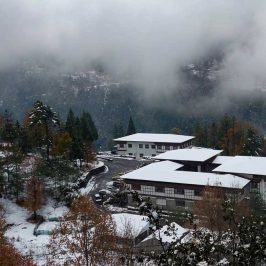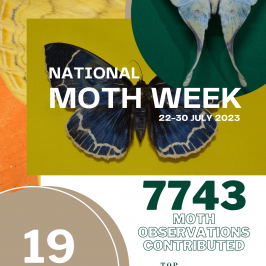![]()
(Contributed by ARDC Yusipang and National Biodiversity Center)
 Agriculture Research and Development Center (ARDC) Yusipang in collaboration with National Biodiversity Center and Dzongkhag Agriculture Sector of Paro Dzongkhag organized the first participatory technical assessment of Evolutionary Plant Breeding trial on High Altitude rice at Shari Chiwog under Tshento Geog. The participatory technical assessment was conducted under the guidance of three experts from Biovarsity International in Rome on 2nd October, 2019. Over 20 rice growing farmers from Tshento and Dopshari Geogs, Geog Agriculture Officer of Tshento Geog, Rice Researchers from ARDC Bajo, Samtenling, Yusipang and Biodiversity Officers from NBC participated in the event.
Agriculture Research and Development Center (ARDC) Yusipang in collaboration with National Biodiversity Center and Dzongkhag Agriculture Sector of Paro Dzongkhag organized the first participatory technical assessment of Evolutionary Plant Breeding trial on High Altitude rice at Shari Chiwog under Tshento Geog. The participatory technical assessment was conducted under the guidance of three experts from Biovarsity International in Rome on 2nd October, 2019. Over 20 rice growing farmers from Tshento and Dopshari Geogs, Geog Agriculture Officer of Tshento Geog, Rice Researchers from ARDC Bajo, Samtenling, Yusipang and Biodiversity Officers from NBC participated in the event.
The Evolutionary Plant Breeding (EPB) trials are introduced to Bhutan for the first time through the EPB project which is funded by International Fund for Agricultural Development (IFAD) through Bioveristy International. Bhutan is one of the partner countries participating in the Global Evolutionary Plan Breeding Project along with Nepal, Jordan, Ethiopia Iran and Uganda. In Bhutan, the EPB project is nationally executed by NBC in collaboration with ARDC Yusipang, Bajo and Samtenling, and Agriculture sectors of Paro, Punakha, Dagana, Tsirang and Sarpang Dzongkhags. EPB trials in Bhutan have been initiated on rice and beans. The EPB trials on rice are ongoing at Paro for warm temperate agro-ecology, in Punakha and Tsirang representing the mid altitude rice growing areas, and in Sarpang for low altitude rice environment. EPB trials have also been started on climbing and dwarf beans at Tsirang and Dagana. The evolutionary populations for both rice and beans were prepared by mixing most popular traditional and improved varieties collected and contributed by farmers and ARDCs from specific locations.
The concept of Evolutionary Plant Breeding represents a dynamic and inexpensive alternative breeding approach where breeders and scientists partner with farmers and provide them with seeds of Evolutionary Populations. The Evolutionary Populations consists of a wide and diverse range of selected genetic materials from national and international genebanks (including landraces, improved varieties). Evolutionary populations are either prepared by crossing or by mixing different improved and traditional varieties or land races popularly grown in a particular agro-ecology. Farmers plant these mixtures in their fields which represents a specific micro-environment. Seeds are planted and harvested in mixtures and through natural crossing in crops, the genetic composition of the population harvested is continuously changing. Through this process the genotypes evolve in that environment and are better adapted to the changing climate trends, local environmental and farm conditions (soil fertility, pests and diseases, agronomic practices, droughts, floods, salinity, temperature, photoperiod, etc.) as compared to genotypes introduced from elsewhere which often takes several years to adapt to a new growing environment. Through the process of natural selection combined with and participatory selections using farmer’s local knowledge and experiences, selections are made over time to ultimately identify a stable evolutionary population to be released to farmers for cultivation.
The science and methodology of EPB has been successfully tested and applied in Italy, Ethiopia, and Iran on crops like wheat, barley, rice and vegetables. EPB is extremely cheap and has been, and can be implemented by poor farmers. The methodology is considered as one of the most inexpensive, sustainable and dynamic ways to develop climate resilient varieties for adaptation to climate change. Cultivation of evolutionary populations can reduce crop vulnerability by generating new diversity through natural selections as genotypes evolve in a target environment.
The EPB project is for four years and the overall goal of the project is to sustainably increase rice and beans productivity, and to enhance the resilience of the farming communities to climate change. With experiences on gained on rice and beans, the EPB concept and methodologies could be expanded to other crops and Dzongkhags is future. The EPB methodology is already being utilized to rehabilited the high altitude rice variety Dumbja.




Leave a Reply
You must be logged in to post a comment.